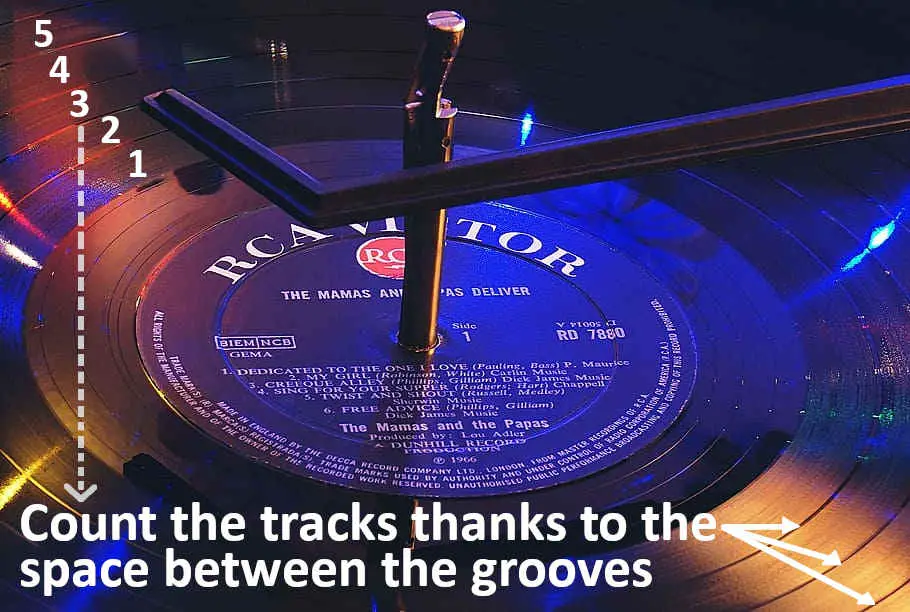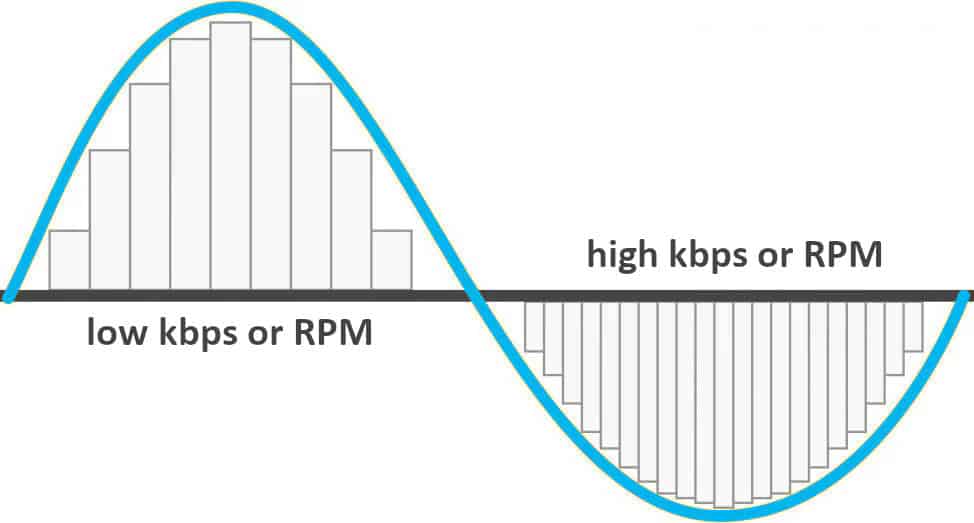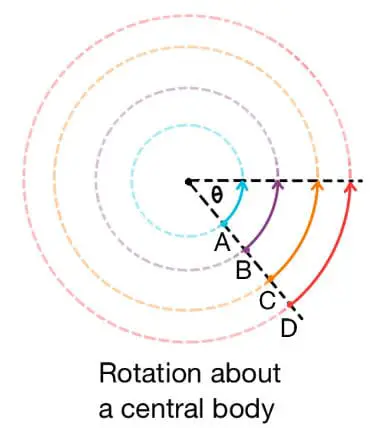If you are new to vinyl, you may be lost in its various sizes and speeds. Knowing how to determine the differences quickly will definitely help you select the right RPM while playing or buying. So, how do you determine if a vinyl record is 33 or 45 RPM?
As a general rule, 12″ vinyl are 33 RPM and 7″ are 45 RPM. In any doubt, the speed is usually written on the central label. If the 12″ record is a single and not an LP, the speed may be 45 RPM. When played at the wrong speed, a record will sound strange which is another way to check it.
This post will focus on all the different existing vinyl and whether it’s better to buy a 33 or 45 RPM for a given song.
Relation between RPM and record size
Here is a table summarizing all vinyl sizes, speeds, and their circulation:
| Vinyl Size | Vinyl Speed | Circulation |
| 7″ | 45 RPM | Very common |
| 7″ | 33 RPM | Rare |
| 10″ | 78 RPM | Very rare, not produced anymore |
| 12″ | 45 RPM | Less common, mostly singles |
| 12″ | 33 RPM | Very common |
As you can see, the 7″ 45 RPM and 12″ 33 RPM records are the most common ones. Therefore they are easy to differentiate, the small ones play at 45 RPM and the biggest one at 33 RPM:

After that, the most common records are the 12″ 45 RPM vinyl. They are mostly used for singles and for their higher sound quality. They can be used for promotion on the radio for instance. I focus more on the difference in sound quality later in this post.
The 10″ 78 RPM records are not really vinyl since they are made of shellac. They are usually thicker and not flexible as vinyl. They came from an ancient time when styli needed to be changed very often and were not made from diamonds.
In fact, 10″ can also be made in 33 or 45 RPM real vinyl. The same as any size records can be made 33 or 45. Indeed, you may find records as small as 3″ in Japan or old 16″ from the 30s. As the 33 and 45 RPMs are the most common speeds on turntables, some music labels like to make odd sizes from time to time for special occasions. In the table above, I only focused on the most common sizes when someone mentions 33, 45, and 78 RPM records.
Relation between RPM and tracks density.
Another useful way to determine if a record is 33 or 45 RPM is to look at the number of tracks per face. A 12″ record with more than 3 songs per face is much likely to be a 33 RPM. A 12″ record with 1 or 2 songs is much likely to be a 45 RPM. This method works pretty well for 12″ records. Please note this rule applies to 12″ records and not really to 7″.

The record above is definitely a 33 RPM vinyl. It has six tracks on side 1. You can determine the number of tracks by looking at the spaces between the grooves. This method is very useful when the speed or the songs are not written on the label.
What is the best between a 33 and 45 RPM record?
In terms of sound quality, a 45 RPM should sound better than a 33 RPM record. A higher speed means more information per second, resulting in more details and hence a higher audio quality. The higher frequencies in particular will be more detailed.
An analogy can be made with MP3s: the highest the kbps (kilobytes per second), the better. The higher the RPMs, the more vinyl passes under the stylus per second. The vinyl grooves are like the kilobytes of digital files. By reading more grooves per second, we read a more detailed reproduction of the sound.

A higher speed also solves some problems due to curvature in the central area of the disc. Indeed, on vinyl the sound quality decrease going inward. The same reasoning applies here: at the central area, fewer grooves are played per second.
In the image below, you can clearly see that less distance is traveled on path A than path D for a given rotation. That means fewer grooves are played per second and in the end less information.
That’s the reason why many vinyl aren’t engraved on the entire surface. The central area is avoided in order to not decrease too much the audio quality, in particular in the higher frequencies.

Increasing the rotational speed – the RPM – will increase the distance traveled per second, thus increasing the audio quality. Therefore, a 45 RPM record will also have a better sound quality in the central grooves.
For the same reason, a 12″ 45 RPM record sound quality is better than a 7″ 45 RPM. Indeed, the outer edge of the 12″ is bigger than the outer edge of the 7″. It can therefore store more audio information per second and sounds better.
Then, why aren’t all records 12″ 45 RPM? The reason goes down to cost. Indeed, 45 RPM is faster than 33 RPM by 36%. Because of that, you engrave less music on a 12″ 45 RPM than a 12″ 33 RPM record. Therefore, if the songs are too long, you can only put one title, maybe 2, per face. An LP or an album would need more disks to store everything. Eventually, that’s multiplying the mastering cost, plating cost, pressing cost, labels, and jackets. That’s the reason why 12″ 45 RPM is not the most common but is still used, especially for promoting songs.
A 45 RPM record sounds better than a 33 RPM 80% of the time.
However, a 45 RPM may not always sound better than a 33 RPM. Indeed, even if the physics says otherwise, there are other factors to consider: the mastering, access to the original tape, quality of the pressing factory, etc. For this reason, it is not uncommon to hear a 45 RPM reissued after the original 33 RPM sounds worse. In short, a 45 RPM record sounds better than a 33 RPM 80% of the time, but not 100%. On recent songs pressed with modern techniques, a 45 RPM record will definitely sound better than a 33 RPM.
